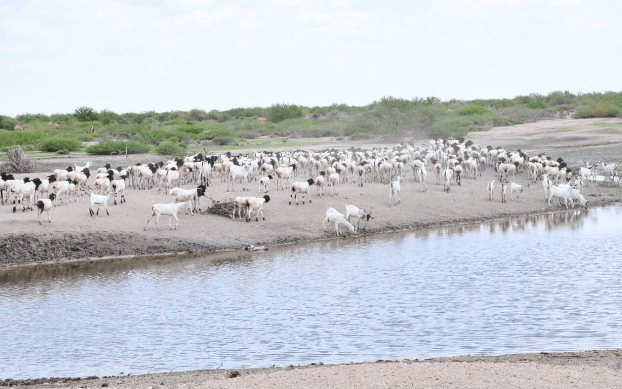There has been a notable improvement in the nutrition status for many Kenyans as of last month.
The recent Kenya Food and Nutrition Security Seasonal Assessments from the Ministry of Health attributed this to improved food security situation.
The report however revealed that certain areas continue to report high levels of acute malnutrition, and that the nutrition situation is expected to remain the same in most of the areas.
“An estimated 760,488 children aged six to 59 months require management of acute malnutrition. This is a reduction compared to 847,932 reported in February 2024,” the report said.
The Integrated Phase classification for Acute Malnutrition analysis conducted in July 2024 shows overall improvement.
“However, some areas continue to report high levels of acute malnutrition. Turkana South improved from extremely critical to critical. Turkana Central, Turkana West, Turkana North, North Horr, Laisamis, Mandera, and Tiaty improved though within the same phase of critical,” the report showed.
“Isiolo, Wajir, Garissa, Tana River, Saku and West Pokot remained in serious classification, while Kilifi, Moyale and Baringo North/South remained in the alert category.”
Makueni, Kitui and Kajiado improved from alert phase to acceptable phase.
Veronica Kirogo, Head Division of Nutrition and Dietetics, said the nutrition situation is expected to continue improving over the projection period.
However, it will likely remain within the same acute malnutrition classification phases.
“The major improvement in reducing the prevalence of global acute malnutrition is attributed to enhanced food security. It is characterised by improved milk availability and consumption, and increased food stocks. This results from the favourable performance of the 2023 short rains and the 2024 long rains,” she said in the report.
Kirogo however noted that malnutrition remains prevalent in arid counties due to the cumulative negative effect of previous failed seasons.
This resulted from the 2022/2023 drought coupled with other shocks such as floods, high morbidity and poor child feeding practices.
Others are poor water, sanitation and hygiene and sub-optimal coverage of multi-sectoral interventions, which have slowed down the positive effects of the good rain seasons.
The report recommended key response actions including provision of nutrition, health and water services to the most affected areas.
Others are mass screening, hotspot mapping and implementation of integrated health and nutrition outreaches in high priority areas.
It also recommends comprehensive multi-sectoral response analysis to accelerate recovery from the effects of drought, floods and other shocks while addressing issues that expose communities to these shocks.
“Sustained response and multi-sectoral actions are required to address the high levels of malnutrition in arid areas and other hotspots,” the report said.
According to the National Drought Management Authority,the number of people in need of assistance has dropped from 1.5 million in February 2024 to one million in August 2024.
“The number of children aged six to 59 months requiring treatment for acute malnutrition has reduced from 847,932 in February 2024 to 760,488 reported in July 2024,” NDMA July early warning bulletin showed.
In addition, the number of pregnant and breastfeeding women requiring treatment for acute malnutrition has also reduced from 123,567 in February 2024 to 112,401 reported in July 2024.
NDMA revealed that the situation is expected to continue in normal phase. However, the situation is projected to improve in coming months as the onset of October-November-December short rains season nears.
Infographics
- 760,488- total number of acutely malnourished children aged six to 59 months.
- 180,414- number of severe acute malnutrition.
- 580,074- number of children with moderate acute malnutrition.
- 112,401- number of pregnant and breastfeeding women requiring treatment of acute malnutrition.
- 1M- number of people in need of assistance in August 202















